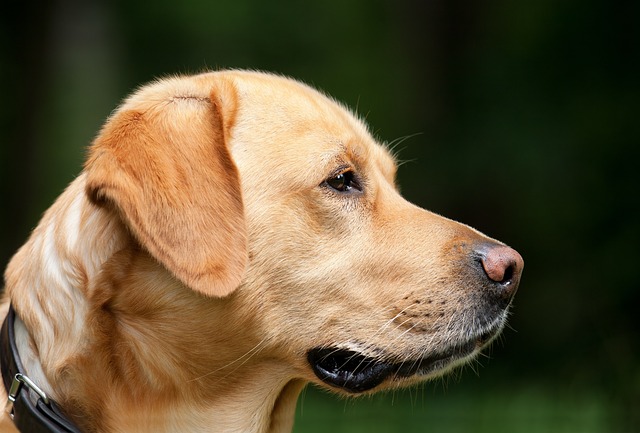
What is glaucoma in a dog?
You might notice your dog squinting more at mealtime or avoiding bright sunlight—these small changes could be early signs of a serious eye condition.
If you’ve ever found yourself vacuuming dog hair off the couch, only to turn around and find a new “fuzzy tumbleweed” rolling across the floor, you’re not alone. A new pup parent in Michigan messaged me last week, frustrated: “My German shepherd is shedding so much, I’m finding hair in my coffee. Is there something I can give her to slow this down?” Excessive shedding—more than the usual seasonal “blow”—often boils down to what’s going into their bowl. Let’s break down how nutrition affects that fur, what to add to their diet, and when to check in with the vet.
First, why fur falls out. A dog’s coat is a reflection of their internal health. Healthy fur grows strong, stays rooted, and sheds only what’s old or damaged. But when their diet lacks key nutrients—like omega-3 fatty acids, protein, or zinc—hair becomes brittle, falls out early, and leaves more clumps on your clothes. Think of it like a plant: without the right fertilizer, leaves yellow and drop. A 2023 study in Journal of Animal Physiology and Animal Nutrition found that dogs fed diets rich in omega fatty acids had 40% less excessive shedding than those on low-fat, low-nutrient diets. Stress or health issues (like allergies) can worsen it too, but food is often the first place to start.

So what should you add to their bowl? Let’s start with whole foods. Fatty fish—salmon, sardines, or mackerel—are packed with omega-3s, which nourish skin and strengthen hair follicles. Try adding a tablespoon of cooked, unseasoned salmon to their kibble 2-3 times a week. My neighbor in Oregon does this for her lab mix: “After a month, the hair on my black pants went from ‘fur coat’ to ‘minor dusting.’”
Flaxseeds (ground, not whole—dogs can’t digest whole seeds) are another winner. Sprinkle 1 teaspoon (for small dogs) to 1 tablespoon (for large breeds) over their food daily. They’re rich in alpha-linolenic acid, a type of omega-3 that supports skin health. Just store ground flaxseeds in the fridge to keep them fresh.
If whole foods feel tricky, vet-recommended supplements work. Fish oil (look for formulas with EPA and DHA) is a classic—ask your vet for the right dose (it depends on their weight). A friend in Texas uses it for her husky during shedding season: “No more clumps stuck to the carpet—just the usual light shed.” Coconut oil, in small amounts (1/4 teaspoon for Chihuahuas, 1 teaspoon for goldens), can also help, but too much can upset their stomach.
What to skip? Avoid low-quality kibble with fillers (like corn or wheat) or excessive salt—these dry out skin and weaken fur. And never give them “human snacks” like chips or pizza—high salt and fat lead to inflammation, which worsens shedding.
Now, let’s tie this to real-world norms. Legally, keeping your dog’s rabies vaccine current (mandatory in all U.S. states) is key—illnesses like thyroid issues (which cause excessive shedding) are easier to catch when they’re in for regular check-ups. When out walking, carry a small brush to quick-sweep fur off park benches or sidewalks—good manners go a long way in tight-knit neighborhoods. In apartments, pair dietary changes with weekly lint-rolling sessions—your neighbors (especially those with allergies) will thank you.
Culturally, remember: Shedding isn’t a “misbehavior.” Yelling at your dog for leaving hair on the rug increases stress, which worsens shedding. Instead, turn mealtime into a positive ritual—praise them when they eat their omega-rich food, so they associate healthy meals with good vibes. A rescue dog I worked with in Seattle shed excessively due to anxiety; once we added salmon to his diet and did 5-minute daily play sessions, his coat thickened up.
But here’s the fine print: If shedding is sudden, patchy, or paired with red skin/scabs, it’s not just diet. That could signal allergies, parasites, or hormonal issues—call your vet. For most dogs, though, tweaking their food works wonders.
At the end of the day, you can’t stop shedding entirely (thank goodness—those fuzzy cuddles are worth it). But with the right nutrients, you can turn “excessive” into “manageable.” Your vacuum (and your black shirts) will breathe a sigh of relief.

You might notice your dog squinting more at mealtime or avoiding bright sunlight—these small changes could be early signs of a serious eye condition.

Let’s set the scene: It’s a sweltering Phoenix afternoon—105°F outside—and you rushed your 2-year-old Lab mix, Cooper, on a quick walk to “get it over with.”

Let’s get real: You’re in your Miami apartment, watching your 3-year-old Corgi, Loki, struggle to climb the stairs to your second-floor unit.

Many dog owners brush off occasional scratching as just “dog behavior,” but persistent itching often signals something more—like a food allergy.

You might first notice your dog scratching more than usual—chewing at their paws until the fur looks thin, or rubbing their face against the couch nonstop.

Let’s be real: You’re standing in your Chicago apartment, watching your 3-year-old Beagle, Max, huff and puff just to climb onto the couch.